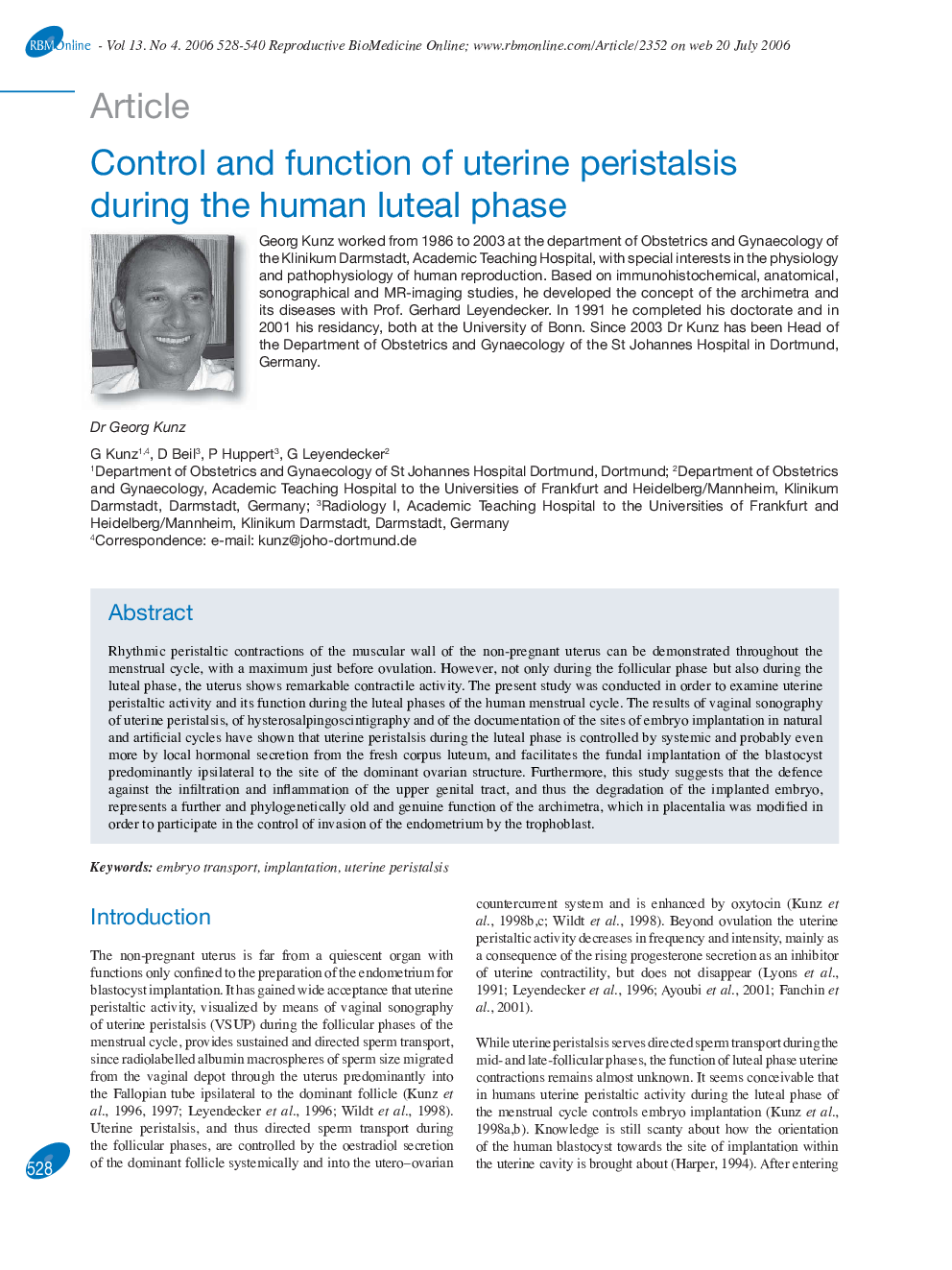| Article ID | Journal | Published Year | Pages | File Type |
|---|---|---|---|---|
| 3973441 | Reproductive BioMedicine Online | 2006 | 13 Pages |
Rhythmic peristaltic contractions of the muscular wall of the non-pregnant uterus can be demonstrated throughout the menstrual cycle, with a maximum just before ovulation. However, not only during the follicular phase but also during the luteal phase, the uterus shows remarkable contractile activity. The present study was conducted in order to examine uterine peristaltic activity and its function during the luteal phases of the human menstrual cycle. The results of vaginal sonography of uterine peristalsis, of hysterosalpingoscintigraphy and of the documentation of the sites of embryo implantation in natural and artificial cycles have shown that uterine peristalsis during the luteal phase is controlled by systemic and probably even more by local hormonal secretion from the fresh corpus luteum, and facilitates the fundal implantation of the blastocyst predominantly ipsilateral to the site of the dominant ovarian structure. Furthermore, this study suggests that the defence against the infiltration and inflammation of the upper genital tract, and thus the degradation of the implanted embryo, represents a further and phylogenetically old and genuine function of the archimetra, which in placentalia was modified in order to participate in the control of invasion of the endometrium by the trophoblast.
